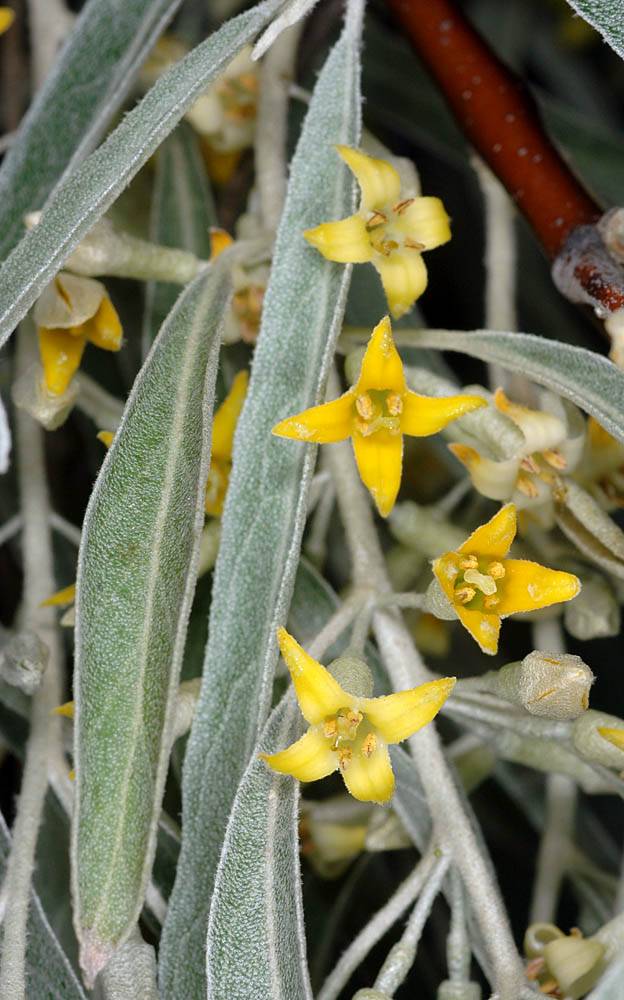Elaeagnus angustifolia
oleaster, Russian olive
lanceolate or very narrowly oblong or elliptic, 25–91 × 6–18 mm; (3)4–8 × as long as wide, bases rounded to acute;
margins entire;
tips bluntly acute;
surfaces abaxially silvery white, adaxially dull green;
petioles 6–10 mm.
pedicels 2–4 mm.
1–3 per leaf axil; hypanthia 4–5 × 2.5–3.5 mm, uniformly silvery white outside, yellow inside;
calyx lobes 2–4 mm.
ellipsoidal, 8–12 × 7–8 mm, yellow, mealy.
5–7 m;
scales silver; young twigs silvery white.
=28.
Elaeagnus angustifolia
Riverbanks, creeks, dry washes, roadsides, sagebrush areas, grasslands. Flowering May–Jun. 0–1500 m. BR, Col, ECas, Owy. CA, ID, NV, WA; north to British Columbia, east to Nova Scotia and VA, southeast to TX; Asia, Europe. Exotic.
Russian olive is often planted in arid areas, where few woody plants will survive. It is tolerant of saline or alkaline soil as well as heat and drought. It has escaped and become naturalized throughout the drier parts of North America. Sterile specimens resemble Shepherdia argentea but are easily distinguished by the alternate leaves.
Alan Whittemore
- Local floras:
BC,
CA,
OR,
WA
- Local Web sites:
CalFlora,
CalPhotos,
Flora NW,
PNW Herbaria
WildflowerSearch
iNaturalist (observations)
USDA Plants Database
- LBJ Wildflower Center
- SEINet
- Plants of the World Online
- Encyclopedia of Life
- Wikipedia
- Google Image Search



